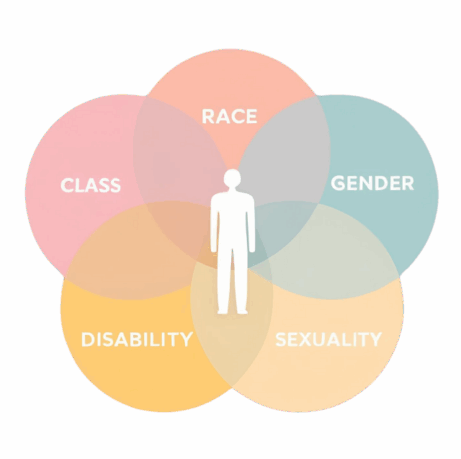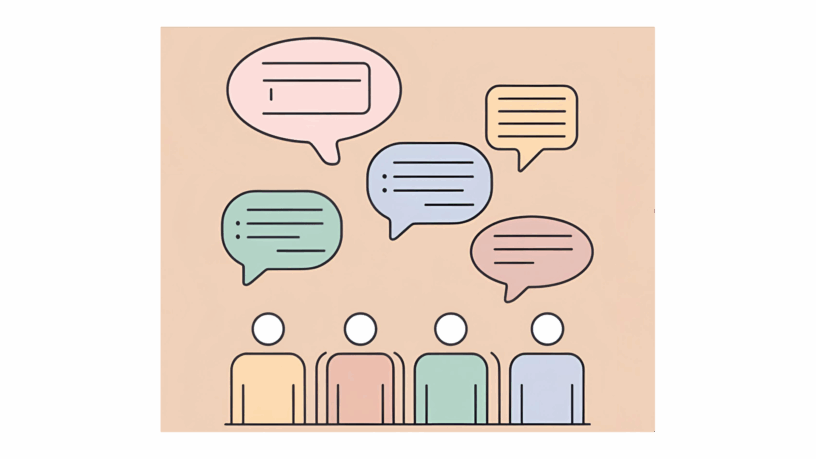Social Location Awareness: A New Blueprint for Equitable Workplaces

Social Location Awareness: A New Blueprint for Equitable Workplaces
Truly equitable spaces can’t be retrofitted—they need to be reimagined from the ground up. Inclusion isn’t something we can layer onto existing systems that were never built to support everyone. Social location awareness, which helps us see where identity and power intersect, offers a blueprint for redesigning workplaces and systems to reflect and serve the full range of human experience.
Representation Hasn’t Been Enough
If you’ve spent any time in corporate America, you’ve seen and possibly experienced this firsthand: the daily lived experiences of many employees—especially women of color and those with disabilities—haven’t meaningfully improved despite years of well-meaning initiatives and investment in inclusion programs.
McKinsey’s 2024 Women in the Workplace report looked closely for a decade at biases and roadblocks faced by Asian, Black, Latina, LGBTQ+, and disabled women, and the data confirms what many of us already know—not only has progress stalled, but in some cases, conditions for women in the workplace have declined.
McKinsey’s research reveals a sobering fact—it’s a quarter of the way through the 21st century, and yet decades of equity initiatives have not translated into real change for those most affected by systemic barriers. How is this possible? As I’ve written before, we all want to avoid working on the wrong problem, yet we’ve been busy patching an outdated structure for decades, cobbling together policies and systems when the real problem is as deep as the foundation. Our systems and structures were never built to be inclusive in the first place.
Alas, there’s the real problem; now, we can attempt to solve it.
Reimagining Workplaces That Work for Everyone
Too often, equity efforts focus on who gets hired—but the more revealing question is: who actually gets ahead? Social location—how aspects of a person’s identity like race, gender, class, ability, age, and sexual orientation intersect with systems, structures, and power dynamics—shapes every part of an employee’s experience in the workplace. Access to mentorships, exposure to leadership opportunities, and the types of feedback and support employees receive are all interwoven with social location and how people with different social locations experience different types of bias at work.

We need to account for those differences when designing fair and equitable workplaces. Not only should we account for them, but we must also be able to identify differences as we audit for hidden biases. For example, a woman might receive vague, personality-based feedback while her male colleague is given clear, skill-based guidance. A disabled employee might struggle in a workplace that values speed over results. An LGBTQ+ professional might be left out of, or feel uncomfortable in, the informal circles where critical opportunities are shared. A highly skilled but introverted employee might be judged as ineffective or timid when forced to perform in group settings like team building events and work socials where extroverts tend to shine.
While these individuals may have been welcomed into the building, the building does not accommodate them comfortably. Social location awareness can make a real difference here. By identifying these hidden disparities, organizations can begin to design with intention—creating systems, policies, and cultures that acknowledge and support a broader range of human experience. Rather than relying on one-size-fits-all solutions, designing fair and equitable workplaces becomes personalized, authentic, and systemic. Social location doesn’t just help us see the problem more clearly—it helps us design the solution.
Designing for Humans
When you combine social location awareness with Human-Centered Design (HCD), there’s potential for a uniquely powerful way to reimagine workplace systems. At its core, HCD is a problem-solving framework rooted in empathy. It centers the voices of those directly impacted by systems, engaging them in the process and continuously refining solutions based on direct feedback.

Originally developed for product design, HCD has evolved into a transformative tool for shaping services, policies, and workplace cultures. When applied to equity work, it starts with a simple but often overlooked question: What do people actually need to feel seen, supported, and successful? Instead of making people adapt to outdated systems, HCD helps us build systems that adapt to the people they serve.
Together, social location awareness and HCD offer a blueprint for designing something better that reflects the full range of human experience.
Turning Awareness Into Action
- Ask and Ask Some More
Ask questions to find out what people actually experience at work. Use tools like surveys, host open forums, and schedule regular one-on-one check-ins to better understand where more support and understanding can be offered. - Reimagine Systems Using Real Feedback
Start by mapping out how different employees move through your systems—from onboarding to advancement. Use their lived experiences to shape how processes and policies actually work. - Expand Access to Mentorship
Don’t rely on informal connections for team members. Create mentorship and sponsorship opportunities that intentionally support people who might otherwise be left out. - Build Company Culture Together
Let workplace culture be something you shape together by inviting employees at all levels to help define it. - Stay Curious and Keep Adapting
Transformation unfolds over time. Try new ideas, gather feedback regularly, and adjust as you learn. Don’t be too hard on yourself! Mistakes are learning opportunities. - Listen
That’s all. Just listen. Remember the saying about how we were given one mouth but two ears?
When we combine social location awareness with human-centered design, we’re laying the groundwork for environments where people feel seen, supported, and encouraged to succeed.
Why It Pays to Get This Right
Reimagining our workspaces with social location awareness at the forefront isn’t just the right thing to do for our fellow humans—it’s also a smart business move. Research shows that companies with above-average diversity in leadership perform better than their less diverse peers. Despite this, a study found that 78% of employees still say there isn’t enough diversity in their company’s leadership. That gap isn’t a coincidence. It’s a design flaw that can be fixed.
When we design systems with social location in mind from the start, we don’t just reduce bias—we build environments that unlock creativity, expand leadership pipelines, and prepare organizations for the future.
A New Blueprint
It’s time to move beyond equity efforts that fall short of delivering real fairness. True transformation begins when we replace outdated systems with something intentional, inclusive, and grounded in the full spectrum of lived experience. This is how we build workplaces that are not only more equitable, but also resilient and future-proof.
Imagine what’s possible when your systems are rebuilt with everyone in mind. Schedule an introductory call with Katherine to explore what that could look like in your organization—and how to begin.
